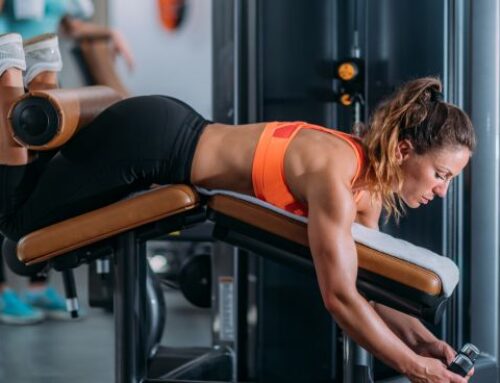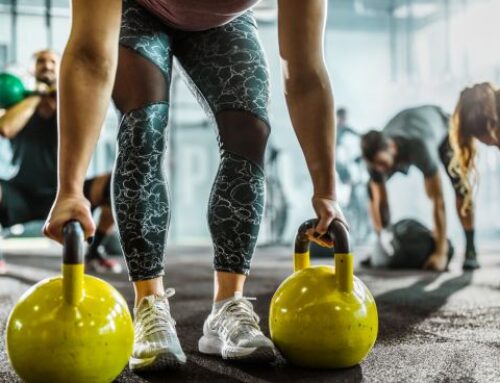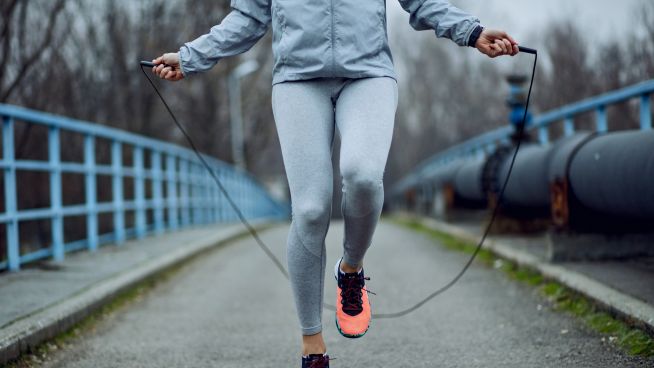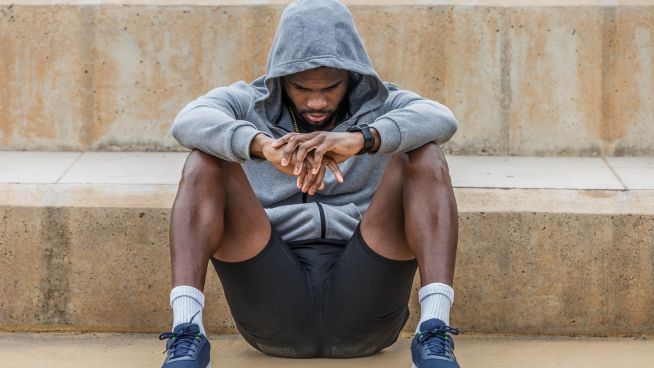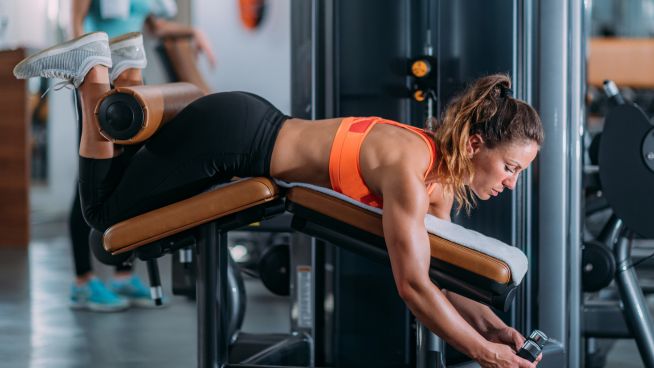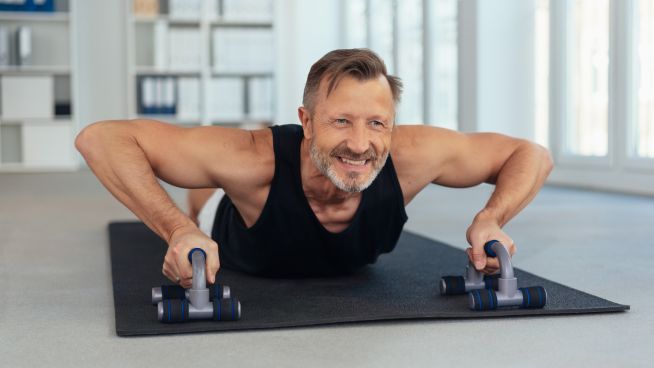How to Improve Your Bench Press, Part 2: Refine Your Technique
It’s the exercise you love to love: the Bench Press. To help you improve your favorite move, STACK presents a four-part series on the Bench Press. Tune back in each week for a new article.
Using proper technique during the Bench Press is essential not only to maximizing the amount of weight you can lift, but also to staying healthy. Using bad technique during the Bench Press is an injury waiting to happen. To develop great technique, first take a step back from maximal effort and start using sub-maximal loads.
Sub-maximal loads allow you to use lighter weight and lift it with maximal speed. Dr. Fred Hatfield, president of the International Sports Sciences Association, refers to this as compensatory acceleration training. Generally, when people train with sub-maximal loads, they do more reps; however, if you are looking to increase your Bench Press, this won’t work!
Instead of performing three to four sets of eight to 12 reps, do eight to 12 sets of three reps. Louie Simmons, owner of Westside Barbell and a pioneer of modern day strength training, refers to lifting sub-maximal weight with maximal speed as the dynamic effort method. Simmons suggests using 40 to 60 percent of your one-rep max (1 RM), but I have found that 80 percent of your 1 RM is more effective for high school athletes. Try this rep and set progression to build up your Bench:
- 40 percent of 1 RM x 3
- 50 percent of 1 RM x 3
- 60 percent of 1 RM x 3
- 65 percent of 1 RM x 3
- 70 percent of 1 RM x 3
- 75 percent of 1 RM x 3
- 80 percent of 1 RM x 3
- 80 percent of 1 RM x 3
Performing short sets will ensure that every rep is high quality and performed as fast as possible. If you’re training at high speeds, you will increase power, which is essential for athletic skills. This method will also help fix flaws in your technique and help you develop a greater rate of force development, or power—critical for your upper-body athletic skills.
The Set-Up
- Lie on bench with head, shoulders and butt in contact with bench and feet flat on floor
- Line up eyes under bar
- Pinch shoulders together and maintain position
- Grab bar one to two inches inside of rings
- Squeeze bar as hard as possible
How to Perform the Bench Press
- Unrack bar and place directly over chest
- With spotter nearby, lower bar to chest with control
- As bar approaches chest, push away from bar and drive feet to ground; do not arch back
- Keep elbows tucked to sides; do not bounce bar off chest
- Explode up to starting position
Read the whole series:
How to Improve Your Bench Press, Part 1: Lift Like an Athlete
Photo: mysanantonio.com
Joe Meglio is a strength and conditioning coach at the Underground Strength Gym in Edison, N.J. Mentored by one of the brightest minds in the strength and conditioning industry, Zach Even-Esh, Meglio has worked with athletes at the high school, college and professional level. He specializes in training baseball players. Besides being a strength coach, Meglio competed in his first powerlifting meet in 2010, setting the New Jersey state record for Squat, Deadlift and total in his weight class and division. He graduated from Fairleigh Dickinson University in May 2011, following his final season as captain of the baseball team. For more information, please go to MeglioFitness.com.
RECOMMENDED FOR YOU
MOST POPULAR
How to Improve Your Bench Press, Part 2: Refine Your Technique
It’s the exercise you love to love: the Bench Press. To help you improve your favorite move, STACK presents a four-part series on the Bench Press. Tune back in each week for a new article.
Using proper technique during the Bench Press is essential not only to maximizing the amount of weight you can lift, but also to staying healthy. Using bad technique during the Bench Press is an injury waiting to happen. To develop great technique, first take a step back from maximal effort and start using sub-maximal loads.
Sub-maximal loads allow you to use lighter weight and lift it with maximal speed. Dr. Fred Hatfield, president of the International Sports Sciences Association, refers to this as compensatory acceleration training. Generally, when people train with sub-maximal loads, they do more reps; however, if you are looking to increase your Bench Press, this won’t work!
Instead of performing three to four sets of eight to 12 reps, do eight to 12 sets of three reps. Louie Simmons, owner of Westside Barbell and a pioneer of modern day strength training, refers to lifting sub-maximal weight with maximal speed as the dynamic effort method. Simmons suggests using 40 to 60 percent of your one-rep max (1 RM), but I have found that 80 percent of your 1 RM is more effective for high school athletes. Try this rep and set progression to build up your Bench:
- 40 percent of 1 RM x 3
- 50 percent of 1 RM x 3
- 60 percent of 1 RM x 3
- 65 percent of 1 RM x 3
- 70 percent of 1 RM x 3
- 75 percent of 1 RM x 3
- 80 percent of 1 RM x 3
- 80 percent of 1 RM x 3
Performing short sets will ensure that every rep is high quality and performed as fast as possible. If you’re training at high speeds, you will increase power, which is essential for athletic skills. This method will also help fix flaws in your technique and help you develop a greater rate of force development, or power—critical for your upper-body athletic skills.
The Set-Up
- Lie on bench with head, shoulders and butt in contact with bench and feet flat on floor
- Line up eyes under bar
- Pinch shoulders together and maintain position
- Grab bar one to two inches inside of rings
- Squeeze bar as hard as possible
How to Perform the Bench Press
- Unrack bar and place directly over chest
- With spotter nearby, lower bar to chest with control
- As bar approaches chest, push away from bar and drive feet to ground; do not arch back
- Keep elbows tucked to sides; do not bounce bar off chest
- Explode up to starting position
Read the whole series:
How to Improve Your Bench Press, Part 1: Lift Like an Athlete
Photo: mysanantonio.com
Joe Meglio is a strength and conditioning coach at the Underground Strength Gym in Edison, N.J. Mentored by one of the brightest minds in the strength and conditioning industry, Zach Even-Esh, Meglio has worked with athletes at the high school, college and professional level. He specializes in training baseball players. Besides being a strength coach, Meglio competed in his first powerlifting meet in 2010, setting the New Jersey state record for Squat, Deadlift and total in his weight class and division. He graduated from Fairleigh Dickinson University in May 2011, following his final season as captain of the baseball team. For more information, please go to MeglioFitness.com.



